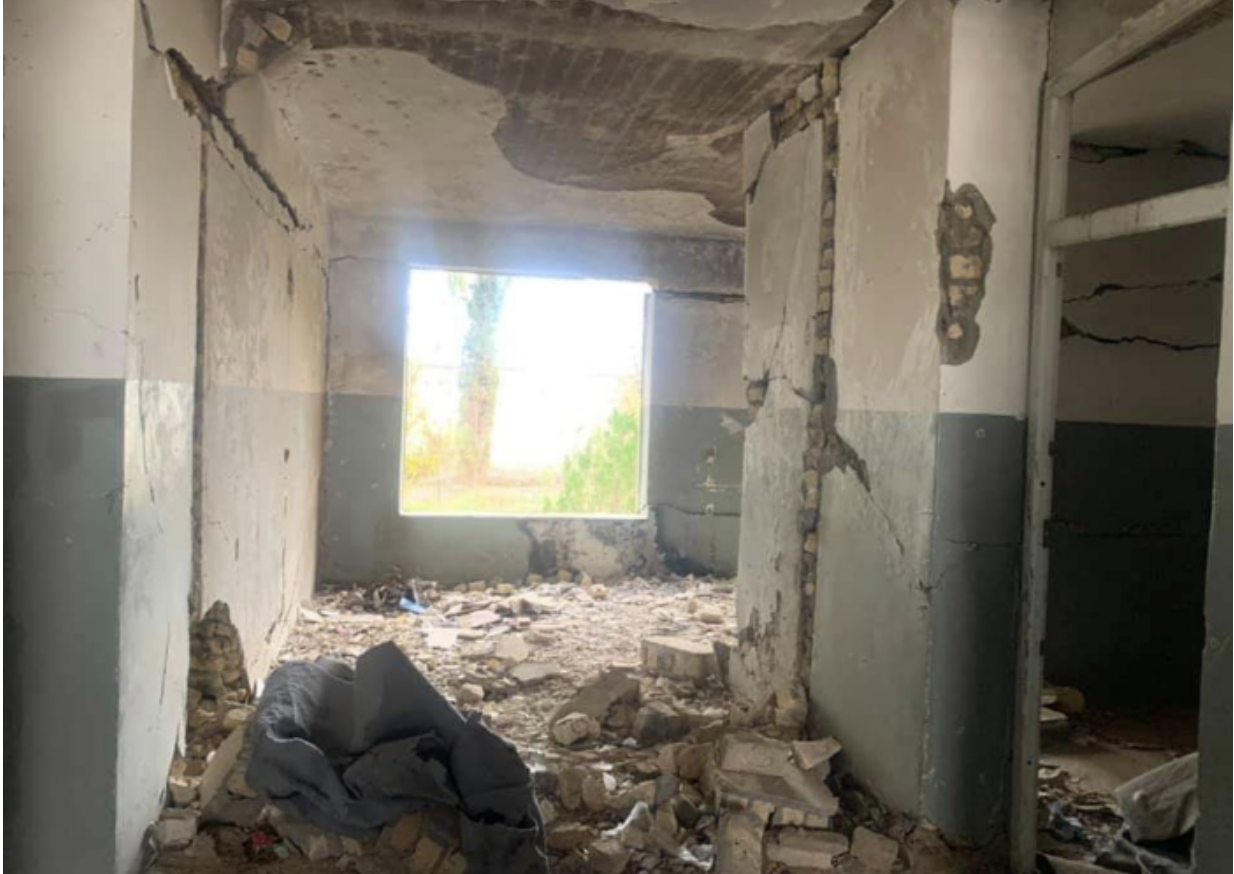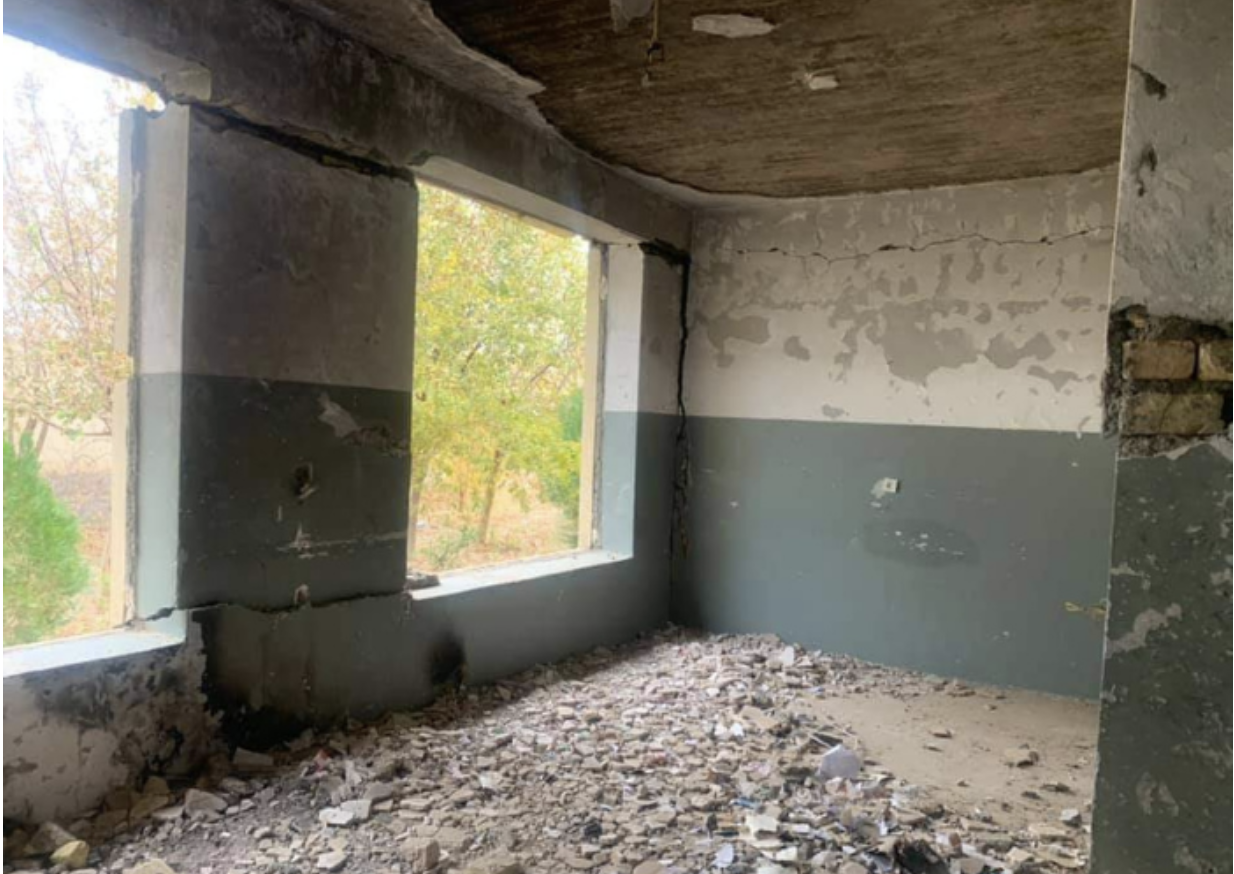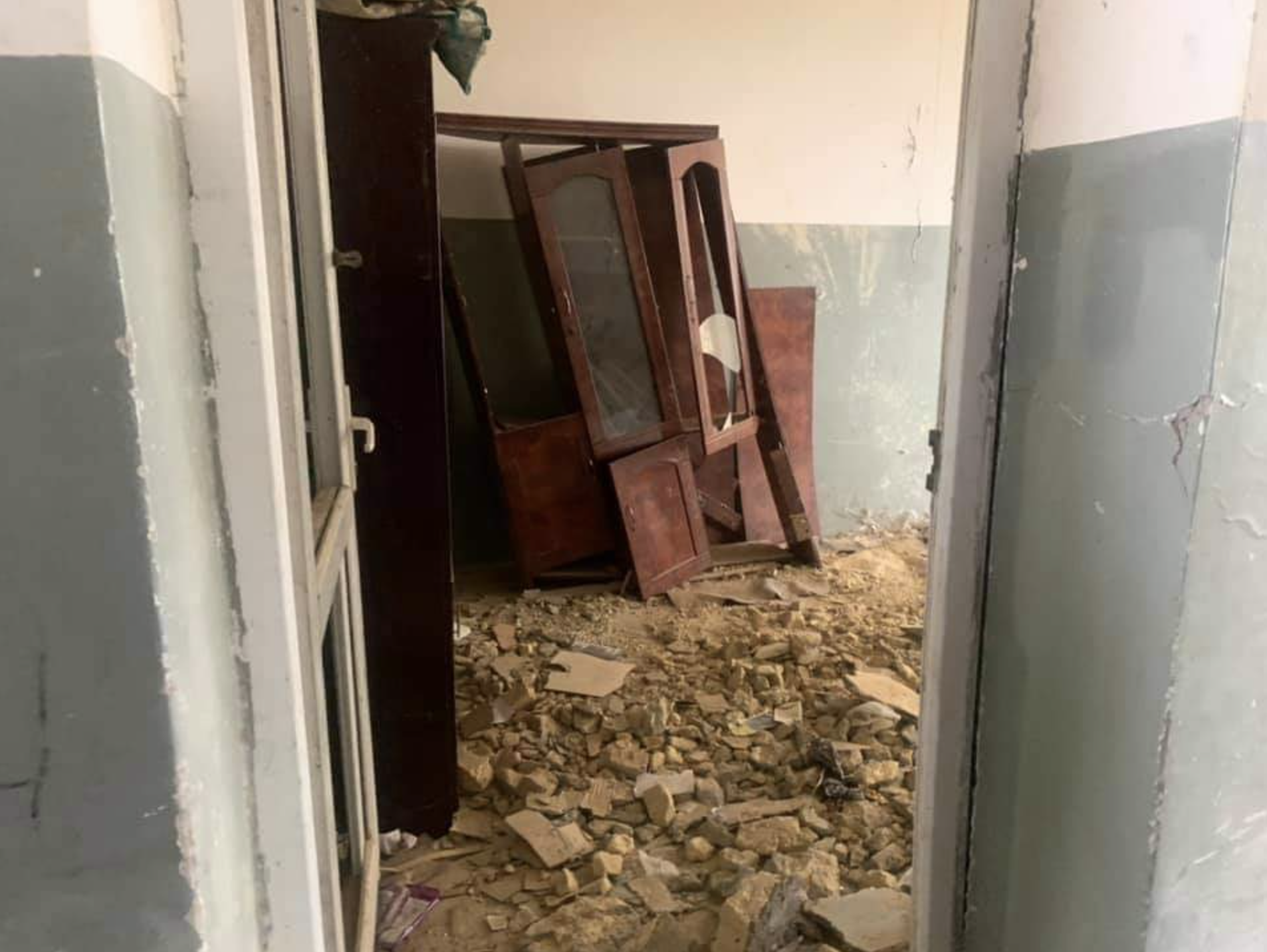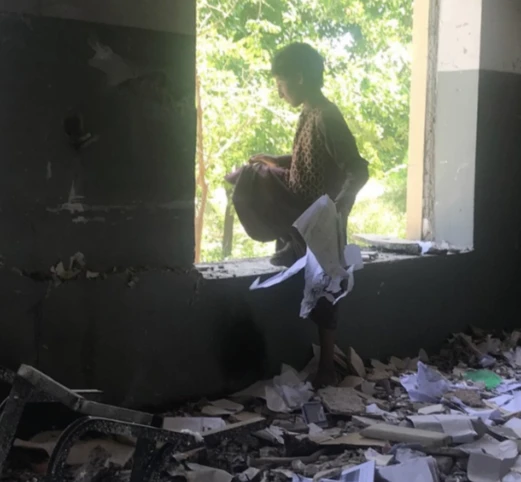Image credit: Najim Rahim / The New York Times
Anonymous writer from Afghanistan.
At 13-years-old, Zainab is the only member of her family who has attended school. She was in the middle of the sixth grade when her school came under attack.
"It was a hot summer day, we were all in class studying biology, when we heard a loud explosion,” Zainab said of that September, 28 in 2019. Though the girls themselves only suffered minor injuries, the school itself was left damaged by the blast. Zainab and her friends haven’t been able to return to school for more than a year now.
“I miss my school, classmates, and teachers. I want to go back to school because I have a dream; I want to become a teacher in the future and help other girls’ study.”
Unlike other girls in her class, Zainab has had little opportunity to continue her studies at home. “I am the only person in my family who ever went to school. There’s no one at home to help me with my studies," she says.
The attack on Zainab’s school is a clear example of the threats facing education in Afghanistan. Despite 20 years of foreign involvement and countless promises made, to millions of Afghans, education still remains a privilege. The senseless attacks on schools; the targeted killing, injury, and abduction of teachers; the threats against education facilities are destroying the hopes and dreams of an entire generation of children like Zainab.
The constant fear and violence have taken a massive toll on education. At least 1,000 schools are currently shut down across the country.
Farah, in Southwest Afghanistan, near the border with Iran, is considered a third-rate province by Kabul. As such, it has consistently received less funding and attention than its neighbours, Herat and Helmand. This lack of attention and the porous border with Iran has made Farah a safe haven for armed groups and drug mafias, who have turned the province into a major transit hub for arms and narcotics. To this day, Farah remains one of the largest opium processing hubs in the country, producing more than 600,000 Kgs of different kinds of narcotics annually.
In total, there are 357 schools actively operating in Farah province, 83 of which are dedicated to girls. Most of those girls’ schools are in the capital city, also called Farah. Outside the city, though, the schools are almost entirely devoted to boys’ education. Schools operating in Taliban-controlled areas are subject to daily monitoring. The group pays special attention to attendance. Absences are reported to result in physical punishment. Additionally, they have replaced subjects such as English and computers with additional Islamic instruction.
Though the tendency has been to blame the Taliban and so-called Islamic State forces for the entirety of the situation, the truth is that mismanagement, corruption and ineffective policies by the government have also played a major role in keeping children from education. The government has failed to deliver on their many promises while the international community is not holding anyone accountable. For instance, despite its limited curriculum and penchant for physical punishment, the Taliban maintain more direct contact with schools than Education Ministry officials in Farah and Kabul do with government-run institutions.


A teacher in Bala Boluk district of Farah told me, “The frequency of government envoy visiting schools in Bala Boluk district has decreased drastically, even if there are any visits from any educational institution is mainly during midterm or final exams and for the purpose of monitoring administrative measurements.”
Recently, the Ministry of Education announced a plan to hand over the education of students in grades one through three to mosques in areas where there currently aren’t education facilities. This leads to the question of why after 20 years and $819 million dollars spent on education funding only in 2017, there are still areas where schools do not exist.
A resident of Bala Boluk district, known as one of the trafficking centres of Farah, said he has seen very little interaction between the government and schools in the area.
“Even the boys’ schools are operating at a very low standard. They lack proper buildings, chairs, desks, blackboards and other essential classroom supplies. Students study in tents in open spaces.”
As one of Afghanistan’s most temperate climates, Farah has the advantage of being able to hold classes, even outside, during the winter. However, with summer temperatures exceeding 30 degrees Celsius, the warmer months make studying outside nearly impossible. Though the proposition is controversial, Majid said he can understand the Education Ministry’s plan to send students to mosques based on one simple reality: “The mosques are well equipped and have better facilities than the actual schools” in Bala Boluk.
In yet another blow against the government’s efforts, the Taliban, who have long been the source of the insecurity that has kept millions of boys and girls from school, recently worked out a deal with the UN to provide education services in areas under their control.
This begs the question, how did Afghanistan get to a situation where the Taliban, a noted terrorist group, is able to negotiate with the UN directly and the government, despite two decades of direct international aid, is having to turn to mosques to educate Afghan children?
With the ongoing talks in Doha and the potential for the Taliban joining the government of Afghanistan in some form, Afghans are asking what has been accomplished in the last 20 years, and what could be at risk if the Taliban get their way in the peace deal?
Politicians often cite education, particularly girls’ education, as one of the “gains” of the last 20 years they want to preserve. Certainly, the number of children in school has increased since 2001, but why are we still in a situation where girls like Zainab are denied access to school and other children lack access to classrooms and other essentials needed for education?

According to UNICEF, at least 3.7 million, or one third, of school-aged children are out-of-school, with two million in conflict or disaster-affected areas, due to insecurity, cultural stigmas and lack of access to proper education facilities.
The fear of violence has forced parents to take pre-emptive measures to protect their children from harm by keeping them from going to school. There was a 45 per cent increase in attacks against schools and personnel between 2018 and 2019. Due to fear of attacks, 1,012 schools were closed depriving 499,552 children (329,133 boys and 170,419 girls) from learning opportunities. Girls – who are already less likely to go to school – have been particularly impacted in this regard with 2.2 million school-aged girls out of school.
Meanwhile, the COVID-19 pandemic also seriously affected the education system in Afghanistan as it led to a 7-month closure of schools. The country is facing 10 million potential students missing learning opportunities, erasing a future the country needs. But Shir Ahmad, one of the teachers in Farah city, states otherwise, “Although all schools were closed in Farah province during COVID-19 pandemic, but the effects of quarantine period on education in rural areas are not as notable as education in cities. This is due to the low quality of education in rural areas, meaning that either schools are closed or open, the students suffer from lack of quality education.”
Afghanistan is now at an important political crossroads. We finally have the chance for peace and with that as a possibility, a new government structure that may include people who once attacked our people and our schools. To take advantage of this opportunity we must first acknowledge the shortcomings, including those by the government and its partners, in order to make the next 20 years more effective and beneficial than the last. Education is of course among the most important issues that must finally be addressed.
No matter what the future government looks like, we must do better for our youth.
Views reflect those of the author(s).
